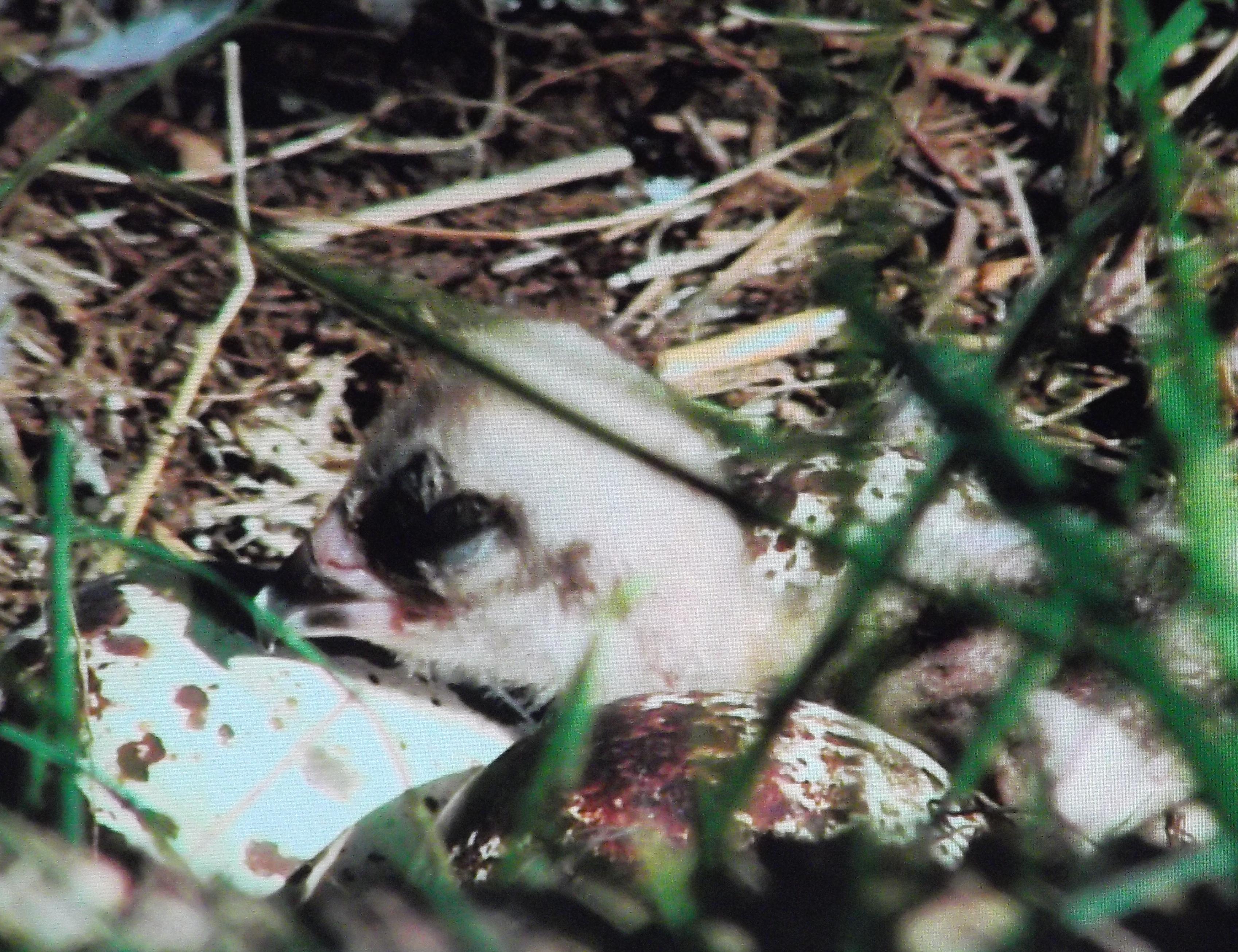Osprey Diary 2nd June (Sunday)
What a wonderful day here at Loch of the Lows- blazing spring sunshine and a newly hatched osprey chick settling in so well to life on the nest. The celebrations continue here as word spreads that our female osprey has bred successfully again for her 23rd year. The chick has been looking strong and healthy and has been feed several times today by its mother, with the male bringing in three fish to the nest so far.

There have been lots of ospreys questions today to ospreys@swt.org.uk so here’s what people have been asking about the day’s events:
Q: Have you given up hope on the other eggs?
A: Egg number one is almost certainly now not going to hatch. It is still possible that one or two of the other eggs may be viable- indeed egg number four is not even ‘due’ until tomorrow ( Day 37 = average incubation only)
Q: I have been hearing this is Lady’s 50th chick is this right?
A: This female osprey has hatched more than 60 eggs in her time breeding here, but only 49 of these have survived to fledge and leave the nest. If this new chick survives, it will be her remarkable 50th fledgling- a milestone we don’t think any other bird has matched.
Q: Is the chick healthy, and is it eating enough? How does it drink?
A: The chick seems to be very strong and fit, and has eaten several tiny meals as normal- tiny bits of raw fish. Its instinct to reach up and demand food is very strong. It is normal for it to be wobbly and a bit uncoordinated at this stage. The chick gets all its moisture from its food and does not drink water as such.
Q: Why does the female osprey sit on the chick?
A: This is normal, to continue to incubate the other eggs which need consistent temperature, and to protect the tiny chick. It’s down covering is not good insulation unlike adult feathers, so it can’t regulate its own temperature well. You may have noticed today that the female took a different posture, with her chest higher than normal, providing shelter and shade and allowing some more air circulation in the spring heat.
Q: Why is the female not leaving the nest and why is she now eating there?
A: This female osprey normally gets very possessive after her chicks hatch and won’t allow the male to take turns incubating any more, until the chick or chicks are much older. She knows absolute vigilance is need to protect them from predators, and the elements . She will still take her very short ‘toilet flights’ for a minute or two each day, but never for long. She now also therefore eats on the nest and shares each meal with her offspring.
Q; Does the male know the chick has hatched?
A: Yes, he saw it not long after hatching yesterday and is aware of it. This will stimulate his instinct to provide. He is more or less ‘relegated’ to fishing duties now but this is a vital role in the success of this family.
Q: Is the chick a male or female?
A: We do not know yet- it is impossible to tell in ospreys until they are much older.
Q: Why did the female osprey eat something out of the egg just after hatching ?
A: The female ate the remains of the inner membrane and the waste sack from inside the hatched egg, both to remove this waste which might attract flies and bacteria, and to recycle the nutrients. The remains of this membrane could be seen on the inside of the hatched egg shell initially yesterday.
Q: What has happened to the egg shell?
A: The female moved the hatched shell to the side yesterday, but most of it rolled back into the centre of the nest. It has now begun to break up as it gets trodden on and there are fragments around the nest cup.
Q: Why has the male started bringing in sticks suddenly? Why were the parents ‘fighting’ over one today?
A: This is a common response to hatching – we think of it as building up the sides of the nest so the chick cannot stray too close to the edge and fall out. The parent birds often seem to ‘disagree’ over where individual sticks should be placed.
Q: Is the ‘egg tooth’ you mentioned visible on the chick?
A: Yes, it is the tiny paler coloured tip on the upper side of the beak of the chick. This normally falls away in the weeks after hatching, as it is not a true tooth.
Ranger Emma
Help protect Scotland’s wildlife
Our work to save Scotland’s wildlife is made possible thanks to the generosity of our members and supporters.
Join today from just £3 a month to help protect the species you love.
Preface
What a wonderful day here at Loch of the Lows- blazing spring sunshine and a newly hatched osprey chick settling in so well to life on the nest. The celebrations …
